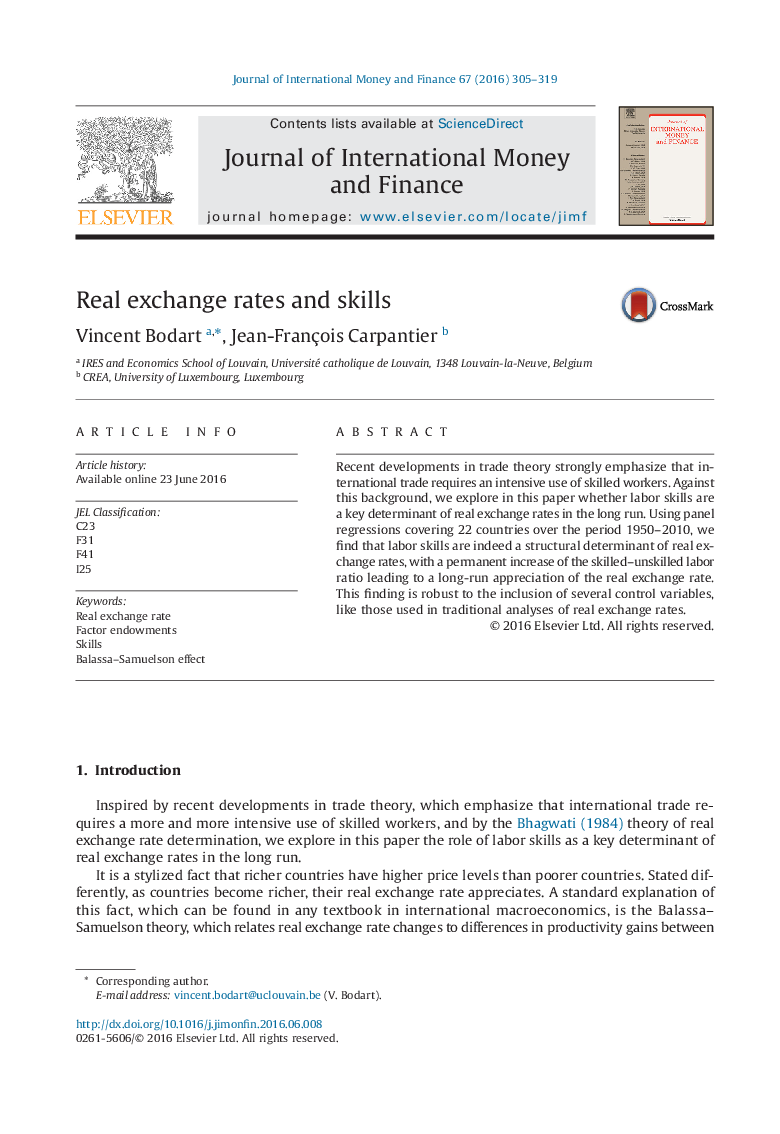| Article ID | Journal | Published Year | Pages | File Type |
|---|---|---|---|---|
| 964595 | Journal of International Money and Finance | 2016 | 15 Pages |
•We explore whether labor skills are a key determinant of real exchange rates in the long run.•We find that a 10% increase in the skilled-unskilled labor ratio leads to a 1% long-run appreciation of real exchange rates.•About 20% of the appreciation of bilateral real exchange rates with the US dollar can be attributed to skills.•The impact of skills on real exchange rates is not altered by the inclusion of traditional determinants of real exchange rates.•Our findings provide new support to the Bhagwati (1994) theory of real exchange rate determination.
Recent developments in trade theory strongly emphasize that international trade requires an intensive use of skilled workers. Against this background, we explore in this paper whether labor skills are a key determinant of real exchange rates in the long run. Using panel regressions covering 22 countries over the period 1950–2010, we find that labor skills are indeed a structural determinant of real exchange rates, with a permanent increase of the skilled–unskilled labor ratio leading to a long-run appreciation of the real exchange rate. This finding is robust to the inclusion of several control variables, like those used in traditional analyses of real exchange rates.
